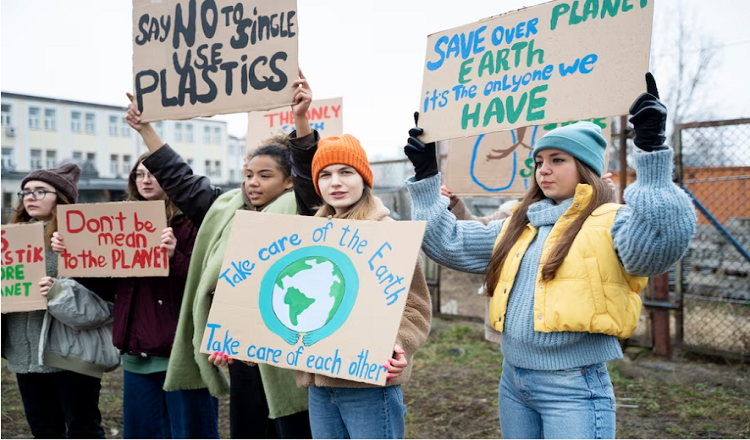The State of Coastal and Ocean Conservation in the US Examining Efforts to Protect Marine Ecosystems and Address Climate-related Impacts
We frequently overlook the vulnerability of these marine ecosystems as we take in the beauty of beaches and coastal landscapes. The United States has 3.4 million square miles of oceanic land and more than 95,000 miles of coastline. The responsibility that comes with such size. the obligation to protect these natural ecosystems and deal with the impending threat of climate change. This blog will analyze the current situation of coastal and ocean conservation in the US, as well as the initiatives being taken to save marine habitats and mitigate the effects of climate change.
It is no secret that a variety of human activities, including as overfishing, pollution, and habitat degradation, pose a threat to marine ecosystems. These ecosystems are also imperiled by climate change, which causes sea level rise, coral bleaching, and ocean acidification. Unquestionably, immediate action is required, and a thorough assessment of US coastal and ocean conservation is required. We shall examine the difficulties faced by marine conservation initiatives in this blog and highlight the developments made to advance sustainability and safeguard marine biodiversity. Join us as we examine the potential for a better future while exploring the depths of ocean conservation.
MPAs (Marine Protected Areas)
In order to preserve and safeguard marine ecosystems and their biodiversity, certain human activities are restricted or outlawed in marine protected zones (MPAs). MPAs are designed to protect marine habitats and species, encourage ethical fishing methods, and aid in scientific study.
Over 1,700 MPAs exist in the US, encompassing 41% of the nation’s seas. These comprise national parks, marine sanctuaries, and other protected places. The Papahnaumokukea Marine National Monument in Hawaii and the Channel Islands National Marine Sanctuary in California are two examples of excellent MPAs in the US that have aided in preserving and restoring marine habitats and species.
However, MPAs still confront a number of difficulties despite their efficiency. Effective MPA management and enforcement are severely hampered by insufficient money and resources. Additionally, the development and success of MPAs may be hampered by a lack of public support and understanding of their advantages. Continue promoting MPAs and educating the public about their significance while providing enough financing and resources for their management and enforcement in order to overcome these obstacles.
Ocean acidification and global climate change
Ocean acidification and climate change have a substantial impact on marine ecosystems, causing changes in ocean currents, weather patterns, and sea surface temperatures. These modifications may cause coral reef degradation, fish population declines, and biodiversity loss.
Reducing carbon emissions, introducing sustainable fishing methods, and encouraging the preservation of marine habitats are all steps taken to lessen the effects of climate change and ocean acidification on marine life. For instance, the creation of marine protected areas and the use of sustainable fishing methods can contribute to the preservation of maritime habitats and biodiversity.
In order to lessen the effects of climate change on the oceans in the future, it is crucial to keep tackling the underlying causes of the problem. This entails spending money on renewable energy sources, cutting carbon emissions, and raising awareness among the general public about the value of ocean protection. We can work together to create a future for our oceans and the species they support that is more resilient and sustainable.
Management of Sustainable Fisheries
Maintaining a healthy marine ecology and providing for the livelihoods of millions of people globally requires sustainable fishing techniques. Fish populations have been depleted and marine environments have been harmed as a result of overfishing and harmful fishing methods. Fishing techniques must be managed sustainably to protect the environment, promote social cohesion, and promote economic growth.
The Magnuson-Stevens Fishery Conservation and Management Act, which aims to avoid overfishing and promote sustainable fisheries, governs fisheries management in the US. The introduction of fishing quotas, the use of environmentally friendly fishing gear, and the creation of marine protected areas are all examples of sustainability initiatives.
However, illicit, unreported, and unregulated fishing as well as bycatch are two major obstacles to sustainable fisheries management. To maintain the long-term sustainability of our seas and fisheries, it is essential to address these issues through ongoing research and stakeholder collaboration.
Plastic contamination
With an estimated 8 million tons of plastic entering our oceans each year, plastic pollution is a serious environmental problem that affects our oceans. This pollution can damage marine life and ecosystems, taint food chains, and worsen the state of our oceans’ health.
Bans on plastic bags, increased recycling, and the implementation of extended producer responsibility rules are all actions being taken to lessen plastic waste and stop pollution from entering the oceans. Ingenious approaches are also being investigated to combat the plastic pollution challenge, including waste-to-energy technologies and biodegradable polymers.
It is imperative to take a comprehensive and integrated strategy to waste management, reduce plastic consumption, and promote sustainable alternatives to single-use plastics in order to solve the problem of plastic pollution in the oceans. Together, we can take action to lessen our plastic use and safeguard the wellbeing of our seas and the wildlife they support.
Habitat destruction and Coastal Development
Significant effects of coastal development and habitat degradation on marine ecosystems include habitat loss for marine animals, changes to coastal processes, and increased pollution. Fish population declines, biodiversity loss, and harm to crucial coastal ecosystems like mangroves and salt marshes may come from this.
The creation of protected areas, habitat restoration initiatives, and sustainable land use practices are all part of efforts to preserve and restore coastal environments. Additionally, ecosystem-based management techniques, which place a high priority on preserving and restoring coastal ecosystems, are gaining popularity as a crucial tactic for addressing the effects of coastal development.
However, there are several obstacles to coastal protection, such as urbanization, industrial growth, and sea level rise brought on by climate change. To maintain the long-term survival of our coastal ecosystems, it is crucial to address these issues through joint efforts by the government, industry, and local communities.
Conclusion
Coastal and ocean conservation in the US is, thus, a complicated and multidimensional subject. Although there have been substantial attempts to save marine habitats and mitigate the effects of climate change, more work still needs to be done. The effects of climate change and the ongoing degradation of our oceans highlight the urgent need for action to support ocean sustainability and conservation.
It is imperative that people and organizations take action to assist ocean sustainability and conservation, including lowering plastic usage, promoting ethical fishing methods, and aiding in the creation and upkeep of marine protected areas. Additionally, in order to solve the issues affecting our seas and coastal ecosystems, government and business must collaborate to put into place efficient policies and regulations.
Together, we can safeguard the diverse species that our oceans support, advance their health, and assure a bright future for future generations. We all have a part to play in this significant undertaking, and the time to act is now.
Read More You May Like:














Post Comment